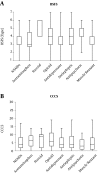The Association Between Constipation or Stool Consistency and Pain Severity in Patients With Chronic Pain
- PMID: 30250817
- PMCID: PMC6139698
- DOI: 10.5812/aapm.69275
The Association Between Constipation or Stool Consistency and Pain Severity in Patients With Chronic Pain
Abstract
Background: Bacteria can influence a variety of gut functions. Some studies showed that stool consistency and constipation were associated with gut microbiome (GM) composition, and enterotype, dysbiosis. Growing evidence indicates the significant role of GM in the homeostatic function of the host body. The GM may regulate multiple neurochemical and neurometabolic pathways. Chronicity of the pain is actively modulated at the molecular to the network level by means of several neurotransmitters. The GM to some extent can affect pain perception.
Objectives: The current study aimed at investigating the relationship between constipation state or usual stool form and pain severity of patients with chronic pain.
Methods: The current study was conducted on 365 patients with chronic pain. The participants were evaluated on their stool form (the Bristol stool form scale; BSFS), constipation state (the Cleveland clinic constipation score; CCCS), body mass index (BMI), and usual pain severity (numerical rating scale; NRS). In addition, the participants were assigned into five groups according to the pain region (i e, low back and/or lower limb, whole body, neck and/or upper back and/or upper limb, head and/or face, chest and/or abdominal).
Results: The CCS showed a significant and positive association with the pain severity of the total patients and patients with low back and/or lower limb pain. Simultaneous multiple linear regression analyses revealed that a predictor of the pain severity was the CCS for the total patients and patients with low back and/or lower limb, whole body pain.
Conclusions: Constipation displayed a significant and positive association with the pain severity of the total patients and patients with low back and/or lower limb pain, whole body.
Keywords: Chronic Pain; Constipation; Gut Microbiome; Pain Severity; Stool Form.
Figures




References
LinkOut - more resources
Full Text Sources
Other Literature Sources
